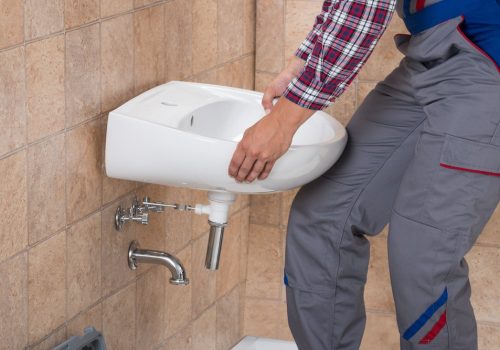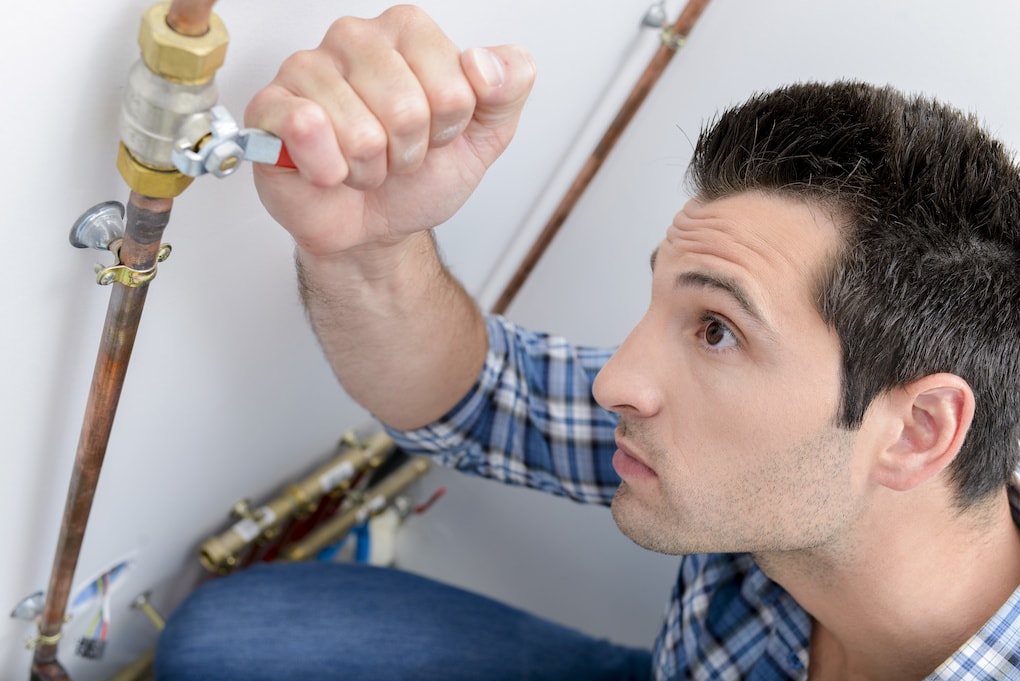Uncovering the Next Era of Plumbing: Patterns and Advancements
Uncovering the Next Era of Plumbing: Patterns and Advancements
Blog Article
Almost everyone seems to have their personal assumption involving The Future of Plumbing: Trends and Innovations to Watch.

Intro
The plumbing industry is undergoing a transformative stage driven by technical innovations and expanding problems for sustainability and performance. This write-up explores arising trends and developments shaping the future of plumbing.
Governing Landscape
Governing structures play a critical role in shaping the fostering of pipes technologies, with criteria and codes regulating whatever from water performance to product safety. As technologies continue to develop, regulative bodies have to adjust to make sure consumer defense and ecological stewardship.
Future Outlook
The future of plumbing is identified by proceeded development and integration with other industries such as IoT, renewable resource, and structure automation. By welcoming sustainable methods, leveraging arising modern technologies, and focusing on user-centric design, the pipes sector is poised to attend to the progressing needs of society while reducing its ecological impact.
Enhanced Reality in Pipes
Augmented Truth (AR) modern technology is changing pipes by supplying service technicians with real-time visual support for fixing and fixing tasks. AR-enabled smart glasses or mobile applications overlay electronic details onto the physical environment, assisting plumbing professionals imagine pipeline layouts, recognize surprise leaks, and execute repair work with accuracy.
Impact of 3D Printing
The advent of 3D printing has introduced brand-new opportunities in making pipes components. From custom-designed fixtures to detailed pipeline installations, 3D printing allows for rapid prototyping and on-demand production, lowering lead times and enabling higher personalization in plumbing design.
Health and Safety Features
In response to heightened issues for health and safety, pipes fixtures are incorporating attributes such as antimicrobial surface areas, touchless operation, and self-cleaning devices. These innovations not just improve health but additionally advertise customer convenience and comfort.
Hygiene-focused Fixtures
Touchless faucets, self-sanitizing commodes, and antimicrobial surfaces are coming to be significantly common in domestic and industrial setups, decreasing the risk of bacterium transmission and advertising a cleaner, healthier setting.
Water Quality Monitoring
Improvements in water high quality tracking technologies make it possible for home owners to check the purity and safety of their water system in real-time. Smart water high quality sensing units can spot contaminants, pH levels, and temperature level variants, empowering users to take positive steps to make sure water safety and security.
Remote Pipes Solutions
Remote diagnostics and virtual support are revolutionizing the method plumbing solutions are supplied. Through video conferencing and remote accessibility technologies, plumbings can repair problems, supply advice for do it yourself fixings, and also execute remote assessments, using higher access and comfort to home owners.
Obstacles and Opportunities
While plumbing technologies hold tremendous pledge, they additionally existing challenges such as data privacy problems, regulative conformity, and the demand for labor force training. Addressing these difficulties calls for collaboration between industry stakeholders and governing bodies to make certain secure and accountable implementation of new technologies.
Smart Plumbing Systems
Incorporating wise technology right into pipes systems makes it possible for remote monitoring, leak detection, and automated maintenance. Smart sensing units and IoT (Net of Points) devices allow house owners and plumbings to keep an eye on water usage and discover issues in real-time, causing more effective source management and proactive maintenance.
Water Effectiveness Solutions
With raising emphasis on water conservation, cutting-edge services are being created to decrease water wastefulness in plumbing systems. High-efficiency components, greywater recycling systems, and wise irrigation controllers are amongst the innovations helping consumers reduce their water footprint while keeping convenience and comfort.
Lasting Materials
The shift towards sustainability includes pipes products, with a growing choice for environmentally friendly alternatives. Eco-friendly piping materials, such as PEX (cross-linked polyethylene) and HDPE (high-density polyethylene), deal durability and resistance to deterioration without compromising ecological integrity.
Anticipating Upkeep
Anticipating upkeep strategies leverage information analytics and artificial intelligence formulas to anticipate and protect against pipes concerns before they occur. By evaluating historical data and performance metrics, anticipating upkeep formulas can determine patterns and abnormalities, allowing proactive interventions to avoid costly repair services and disruptions.
Final thought
To conclude, the future of plumbing is defined by a merging of technology, sustainability, and user-centric style. By embracing clever services, sustainable materials, and proactive upkeep methods, the plumbing industry can boost efficiency, promote safety, and add to a much more sustainable future.
Plumbing Technology Trends 2024: Shaping a Sustainable and Efficient Future
Plumbing Technology: A Beacon of Innovation
Intelligent Plumbing Systems: The adoption of smart plumbing solutions offers unparalleled control over water usage, preventing waste and ensuring optimal efficiency. These systems can be installed by qualified contractors and may require technicians with expertise in new codes for proper functionality. Eco-Friendly Piping: Innovations in piping materials, like PEX and recycled content options, are making plumbing systems more sustainable. These materials are not only better for the environment but also durable and flexible, making them easier to install and less likely to need repairs. Automated Leak Detection: New plumbing technologies include systems that can automatically detect leaks. This is a big deal because it means we can fix them before they cause a lot of damage or waste too much water. It’s all about catching problems early and saving resources. Energy-Efficient Water Heaters: There’s also a big push towards devices that use less energy. This includes solar and tankless models, which provide hot water only when it’s needed, cutting down on energy use and costs. Plumbers: Champions of Sustainability
Adopting Green Practices: Contractors who specialize in sustainable plumbing can ensure your system meets the latest regulations and utilizes efficient valves. They undergo comprehensive training programs that emphasize sustainability in practices like eco-friendly installations. Water Conservation Efforts: Through the installation of high-efficiency appliances, plumbers are essential in reducing water consumption and promoting conservation. When repairing or replacing older fixtures, plumbers can recommend high-efficiency options that comply with local codes. Pipe: The Lifeline of Modern Plumbing
Innovative Pipe Solutions: The use of environmentally friendly and durable materials in pipes, like PEX and recycled content options, reduces the ecological footprint and enhances water quality. These innovative pipe solutions may require specialized repair techniques from qualified plumbers familiar with the materials. Advanced Leak Detection: Modern pipes are now more frequently equipped with sensor technology that can identify leaks early, conserving water and preventing damage. Early leak detection can save homeowners money on repair costs and potential water damage. Water Heater: At the Forefront of Efficiency
Renewable Energy Heaters: Solar heaters and other renewable energy-powered models are becoming more common, offering an eco-friendly alternative to traditional methods. These benefit the environment but can also potentially lead to lower water bills through reduced energy use. On-Demand Heating: Tankless heaters have gained popularity for their ability to provide hot water as needed, minimizing energy waste. This innovative technology eliminates the need for a large storage tank, freeing up valuable space and simplifying the installation process for qualified plumbers. https://intownplumbingtx.com/articles/plumbing-technology-trends/

We had been shown that editorial about from a friend on our other domain. Sharing is nice. Who knows, you will be helping someone out. Thanks a lot for taking the time to read it.
Call Today Report this page